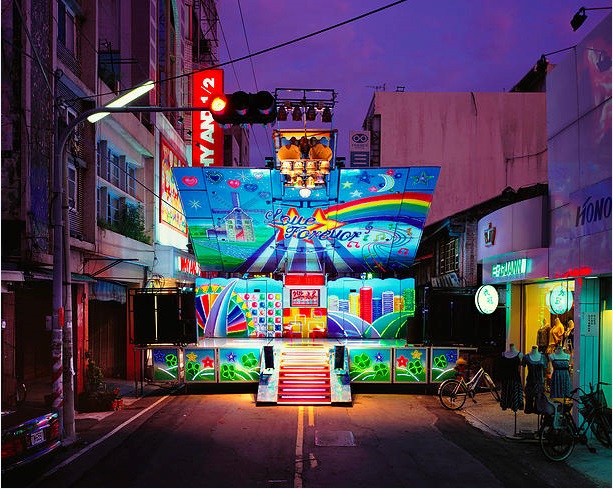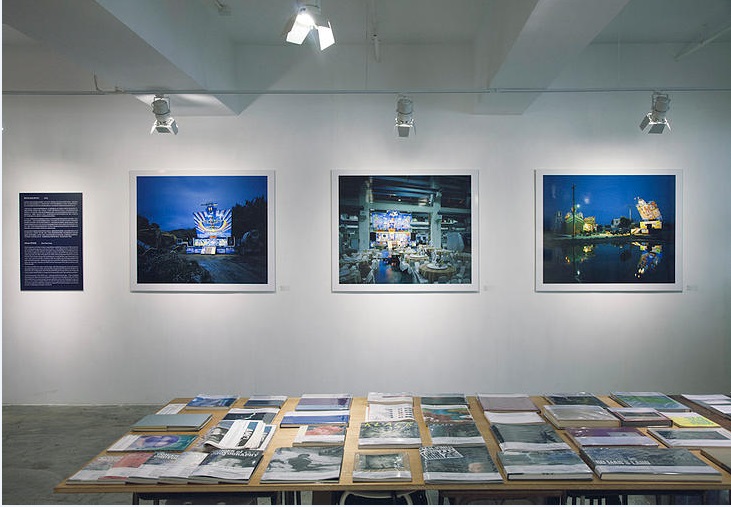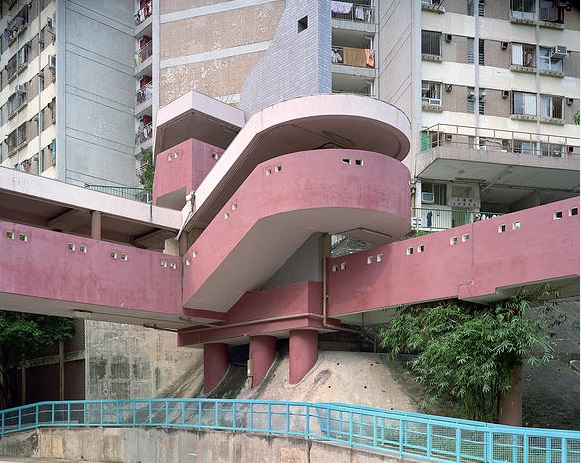Reviews & Articles
Interest in Hong Kong Photography Remains Low
John BATTEN
at 12:22pm on 26th May 2015





Captions:
1. Shen Chao-liang, Stage number 2, Yunlin County, Taiwan, 2008, lightjet C-print.
2. Shen Chao-liang, installation view of 'Stage' exhibition, The Salt Yard, 2014.
3. Dustin Shum, Cho Yiu Chuen, 4/2011, archival pigment inkjet print. Courtesy of the artist.
4. Dustin Shum, Choi Wan Shopping Centre, Choi Wan Estate, 12/2010, archival pigment inkjet print. Courtesy of the artist.
5. Dustin Shum, Tsui Ping Estate, 7/2012, archival pigment inkjet print. Courtesy of the artist.
(原文以英文發表,題為《對香港攝影的興趣仍不大》。)
Photography is ubiquitous in Hong Kong. It is a photogenic place and with its free port status has been a magnet for camera equipment buyers for decades. As a stopover trading port, entrepôt and longtime foreign correspondents’ hangout a swath of photographers have brushed their mark on the city: Felice Beato, John Thomson, Henri Cartier-Bresson and Steve McCurry to name a few of the luminaries that indelibly contributed to the canon of photographic history and passed through Hong Kong.
Especially now, with instant messaging through Instagram, Facebook and between friends, a camera or smartphone conveniently, cheaply and rapidly produces digital photographs. Until quite recently, an intermediary, a photo-developing laboratory or shop, was required to print a physical photograph from an analogue camera. Possessing anything physical makes it closer, immediate and something to be intellectually considered and possibly memorialized. It is the important physicality of photography that has been lost with the advent of digital media.
But, just as we buy flowers to bring beauty or nature into our homes, or print-out and frame photographs of family and loved ones, art – including photography – will continue to have significance as a carefully chosen and physically placed object in the home, office or museum. There has been much debate about whether the glut of digital photography and the notion of “everyone is a photographer” have undermined photography’s purity. Of course it has – the amount of daily imagery that people sees is overwhelming. However, most images will be forgotten or filed in the brain’s inner recesses. Our brains have always worked that way – most information is discarded as not being useful. Memorable and iconic photographs of events, places, concepts and composition will remain important as the brain associates and retains still - not moving or cinematic - imagery.
I am sure we could all build an improvised house with wood and galvanized iron if we had to, but a serious, solid house requires good material, expertise and professionalism. Photography is similar. Unfortunately, the appreciation of a photographer’s traditional skills: a photograph’s composition, lens selection, reading lighting conditions off a light meter, adjusting apertures, precision printing in a darkroom etc has largely been debased by digital cameras and Photoshop. However, photographers who work carefully, in series around topics and prepare an exemplary body of work will always excel above the photo-snappers who pepper their social media accounts with random images.
Despite Hong Kong being such a photographic-focused city, collecting photography has never been widespread. Only the fledgling M+ and the Leisure & Cultural Services Department’s Museum of History (historic photography only) and the Heritage Museum collect photography. For some unexplained reason, the latter has a fascination for mounting survey exhibitions of salon photography. Salon photography is a genre dominated by amateur photographers and tends to concentrate on the technical aspects of photography in a tight range of subject matter – light and shadow studies, sunsets with mountain and sea views, etc. It is a very limited area of interest.
In contrast, gritty social realism, documentary photography, photojournalism and ‘art photography’ are concerned with the end-image; a photograph’s message, both overt and subliminal, as seen by the viewer. Despite Hong Kong photographers’ excellent output, there is presently little concerted effort by our public museums to comprehensively collect in these areas.
Consequently, support for galleries exhibiting photography in Hong Kong is also limited. The new, privately funded f11 Photographic Museum in Happy Valley collects iconic examples of international photojournalism. However, the collection has been predominantly sourced from the New York-based Magnum Photos collective, representing such photographers as Elliot Erwitt.
The Salt Yard closed in April. You have possibly never heard of it, but it was one of Hong Kong’s few dedicated galleries exhibiting photography. Hong Kong’s photography galleries, including the wonderful Blindspot Gallery in Wong Chuk Hang and non-profit Lumenvisum in Shek Kip Mei, deserve and require support. The Salt Yard was founded two years ago by photographers Dustin Shum, Lit Ma and Gary Ma, and presented a variety of Japanese, Taiwanese and Hong Kong photography – a highlight being a presentation of Dustin Shum’s Blocks, a comprehensive survey of Hong Kong’s modernist housing estates.
Despite a solid exhibition programme, The Salt Yard closed because it simply did not sell enough work to justify remaining open. The life-blood of independent galleries is an audience – having dedicated visitors and buyers justifies the work and effort of mounting exhibitions. The gallery was located in Ngau Tau Kok –perceived as being an inconvenient location. More significant for success however, was The Salt Yard just wasn’t one of the few ‘anointed’ or talked-about galleries that must be seen and purchased from by collectors. The ‘buzz’ of visitors ensures a gallery remains relevant, forward-looking and has sales prospects.
The Salt Yard’s neighbours were logistic companies, warehouses, food factories and busy trading firms. It is ironic that the government has chosen East Kowloon to be Hong Kong’s latest creative and commercial ‘hub.’ The reality is that the present low-cost environment, essential for such creative industries as innovative galleries, will be lost with such top-down government planning initiatives. Despite its physical closure, The Salt Yard continues to run its online bookshop (www.thesaltyard.hk). True collectors seek out good art. The Salt Yard’s website is an excellent place to start.
A version of this essay was published in The Peak, June 2015.
